By Matthew Stansbery
This just in: The most interesting and attractive specimens in this hobby are neither hard to find nor hard to keep! Often glanced over by seasoned aquarists, mushroom corals (or umbrella corals) are captivating to the eye as well as extremely easy to maintain. From the Caribbean to Fiji there are several different families to choose from, each offering a variety of sizes, shapes, and colors.
[wonderplugin_slider id=”3″]
Scientific Note
Mushroom corals are classified outside the traditional “coral” catalogue, instead falling under a separate order of soft coral called Corallimorpharia. This category was created to distinguish them from other corals because mushroom corals are unique in that they share traits with both coral and anemone.
Common Families
• Actinodiscus (formerly Discosoma)
• Ricordea (Florida & Yuma)
• Rhodactis
Beginner’s Choice
Mushrooms have been a staple in the marine aquarium hobby for over twenty-five years and often make their way into aquariums as an initial purchase. Being one of the very first live specimens to ever be housed in a synthetic system, Corallimorphs are perfect for saltwater beginners for good reason::
• They can tolerate a wide range of water parameters
• They do not require special attention
• They are not aggressive towards other tank inhabitants
• They propagate easily
*Tip: Corallimorphs are a great choice for fish-only systems, as the vast majority of reef fish do not find mushrooms appetizing. Most mushrooms can also tolerate higher levels of nitrate, phosphate and ammonia!
Husbandry
Caring for mushrooms is, by and large, very simple. While most mushrooms can tolerate the presence of a varied collection of inhabitants and less than optimal parameters, certain conditions enable them to thrive rather than simply survive. Mushrooms seem to do better in tanks with higher than normal levels of nutrients and lower levels of lighting and flow. They are a “sit and forget” type of coral that live out their lives best when left undisturbed. Interestingly enough, a lack of attention to these organisms will actually promote a natural “budding” of the mushroom through an asexual reproductive process called Pedal Laceration. This is where the mushroom will slowly move along the substrate and leave behind cloned copies of itself.
*Rule of Thumb: Corallimorphs with long tentacles on or around the oral disc can be aggressive towards other corals, so make sure to provide plenty of space when placing them in the aquarium.
Super Morphs
Some of the most beautiful mushroom corals ever collected are available quite readily to the average hobbyist wiling to shell out an extra couple bucks. Names like “Jawbreaker” and “Bounce” have been attached to two of the hobbies most stunning specimens ever procured, and anything with the pseudonym “rainbow” is worth a second look. Collector morphs like these often fetch hefty price tags that reflect the exquisite complexities and iconic beauty of their respective morphologies. Let’s now take a look at some amazing examples of Actinodiscus,Rhodactis, and Ricordia.
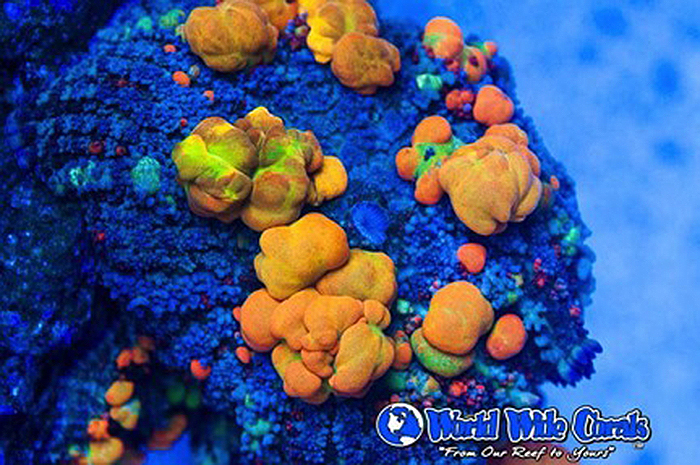
The notorious “Bounce” Mushroom, compliments of World Wide Corals. It’s identification is disputed, but it exhibits morphologies of Rhodactis.
I want to thank AquaSD, White Corals, Cherry Corals, Reef Raft USA, Reefkoi Corals, and World Wide Corals for use of their amazing photos, as well as providing the everyday hobbyist with a chance to own a true collectors piece!


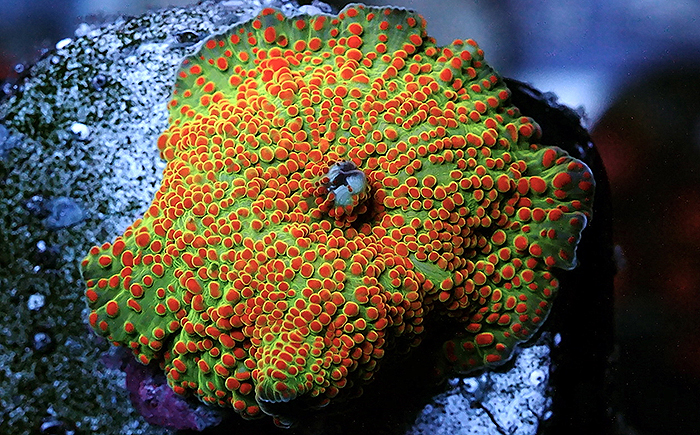
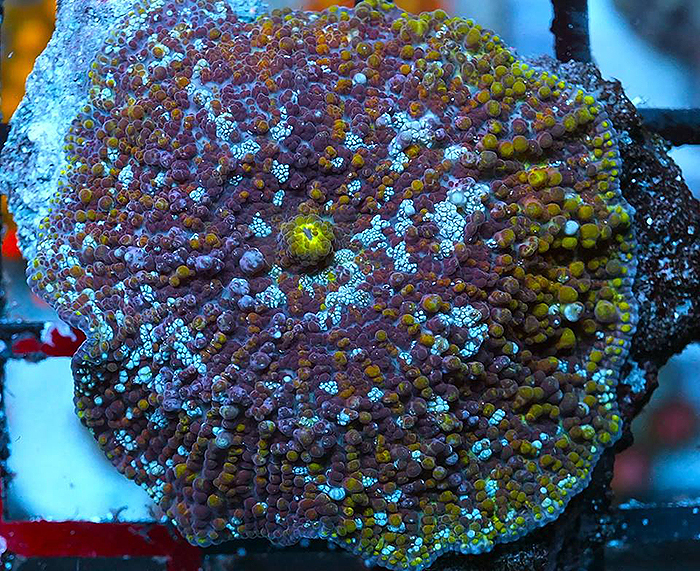
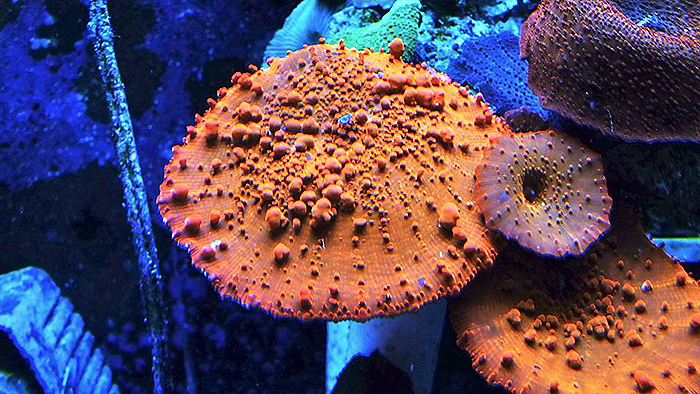
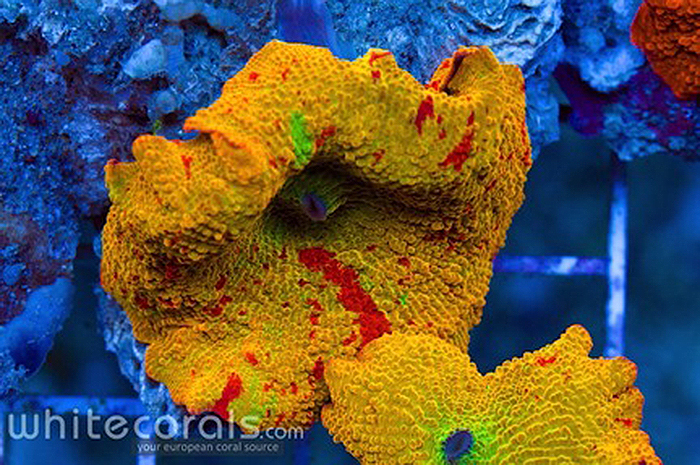
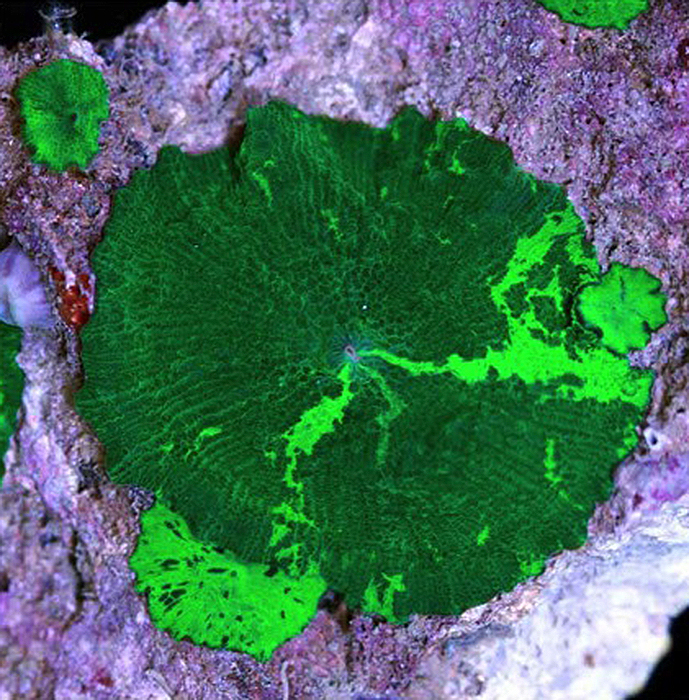
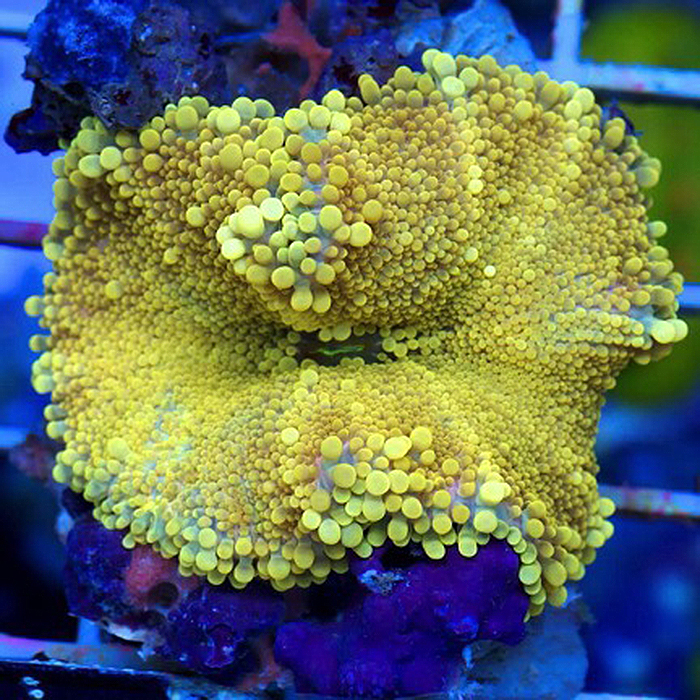
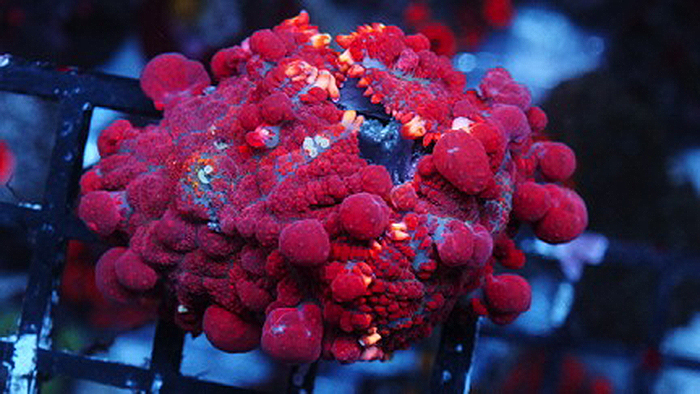

0 Comments